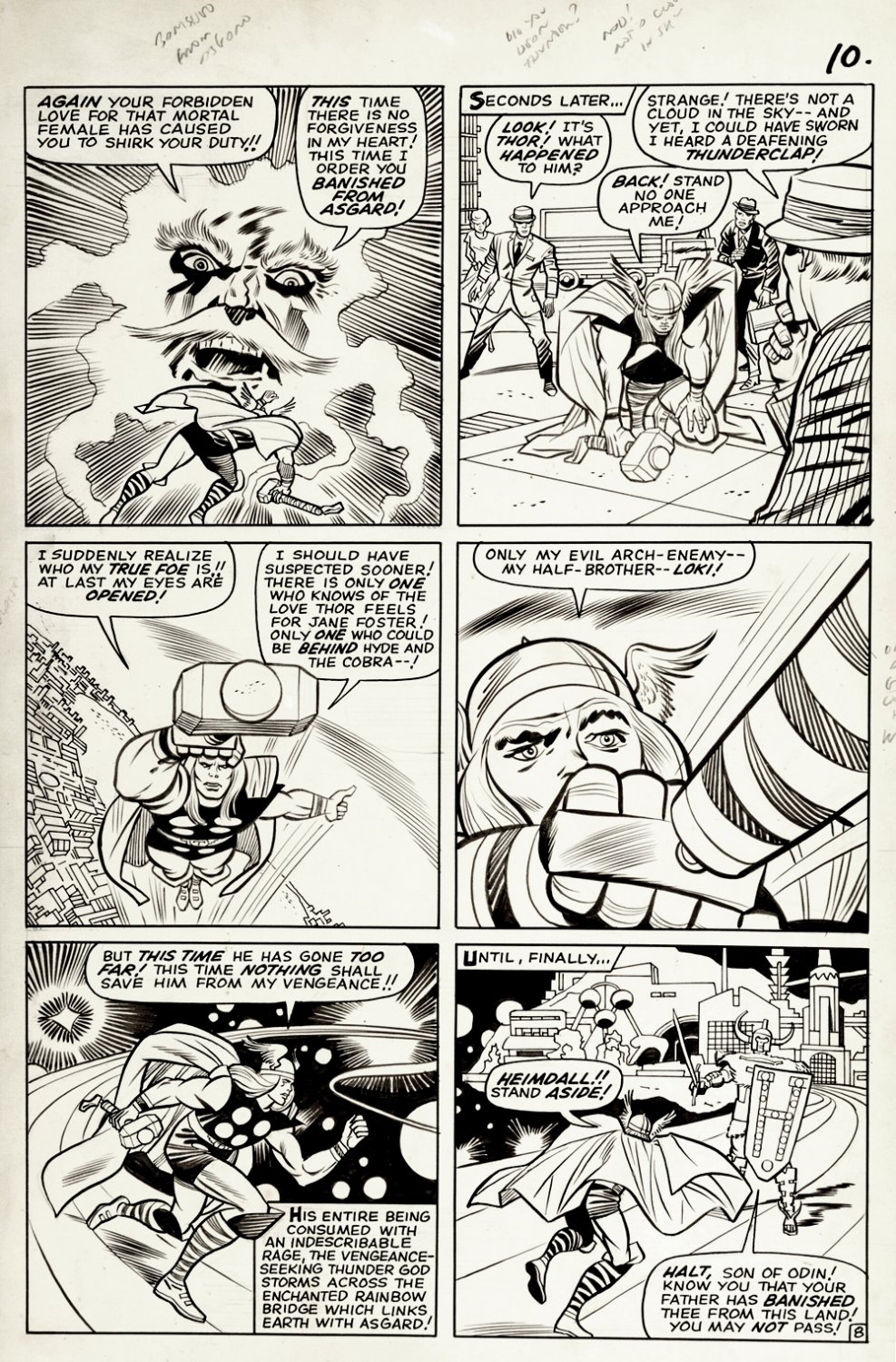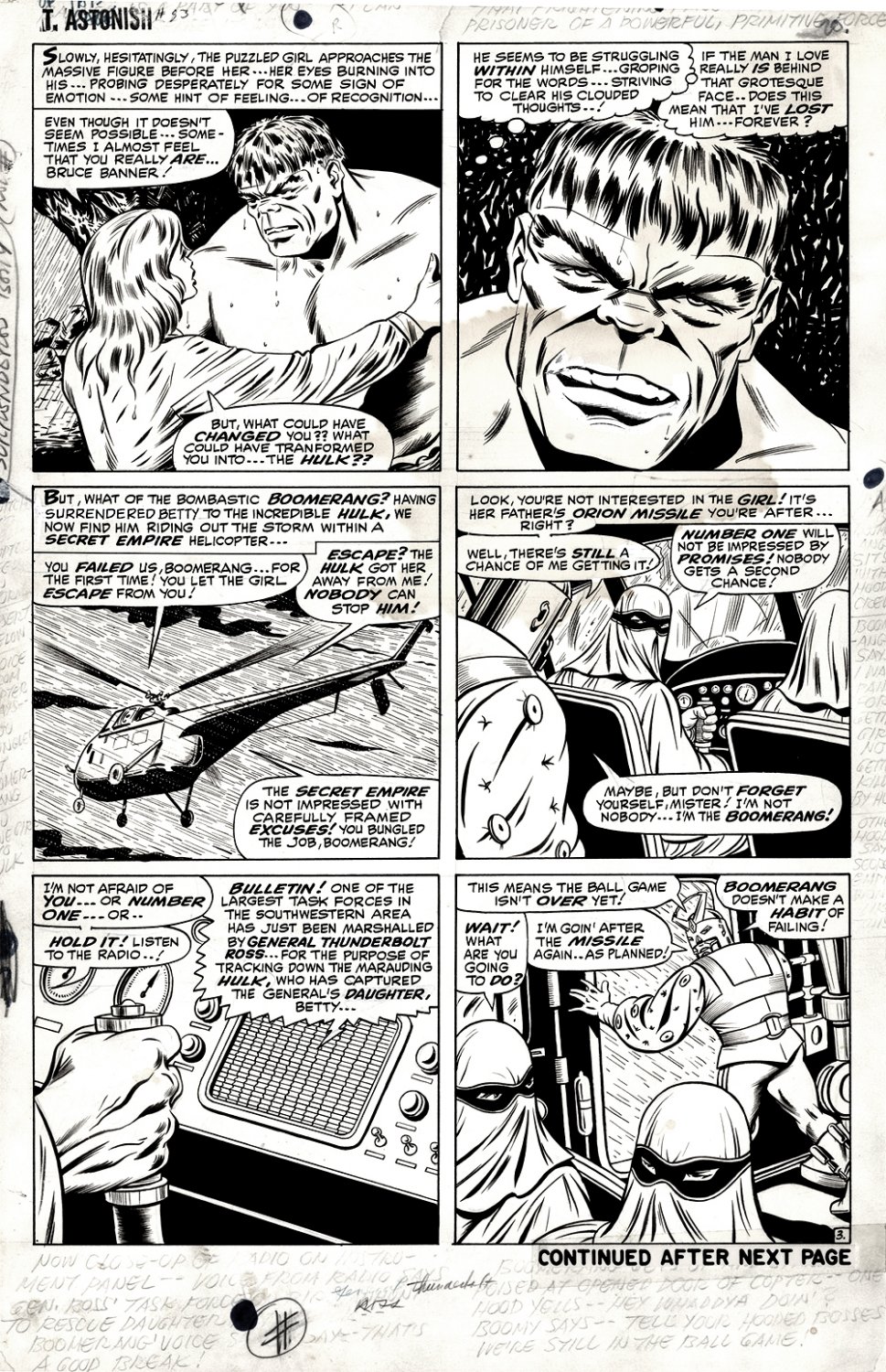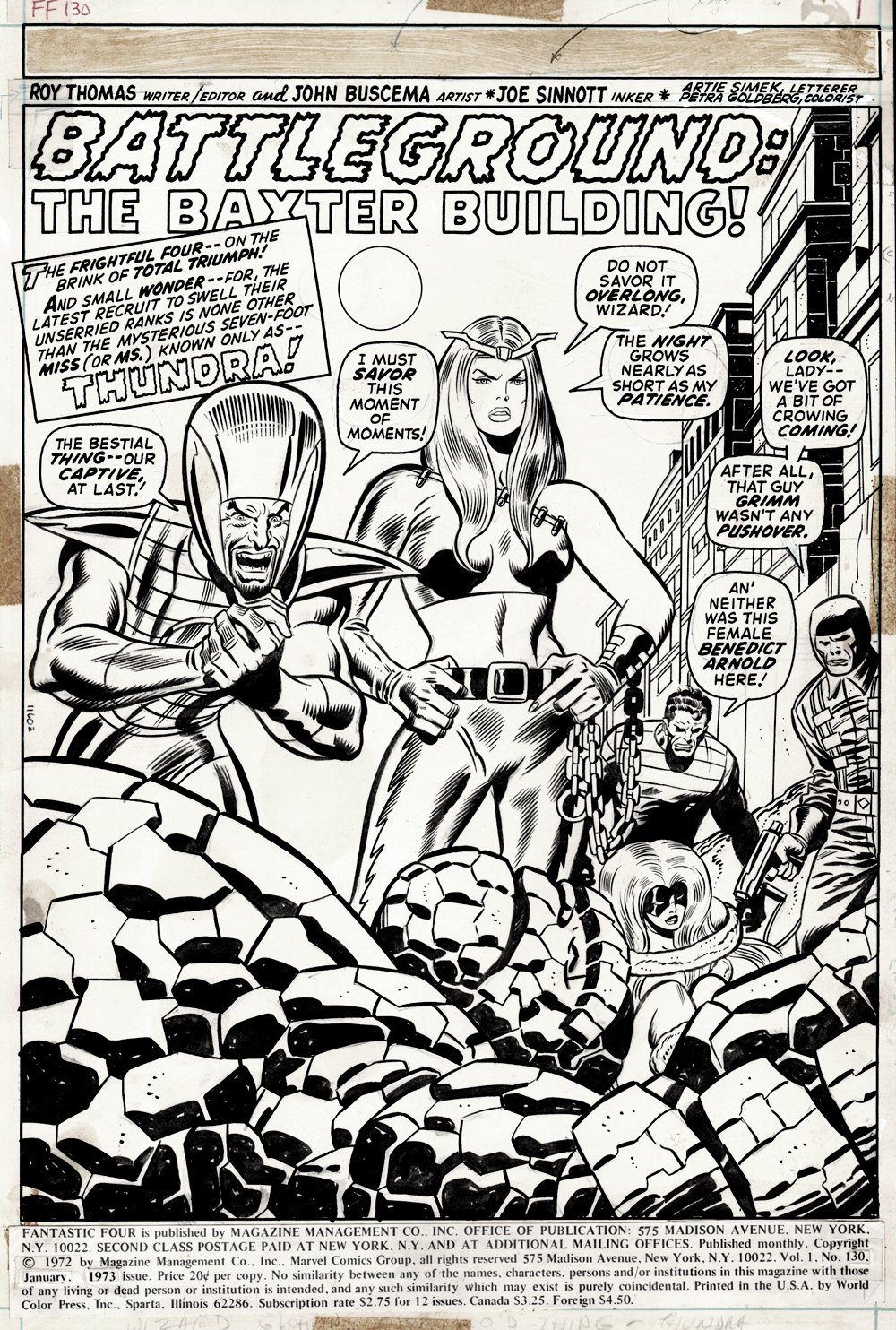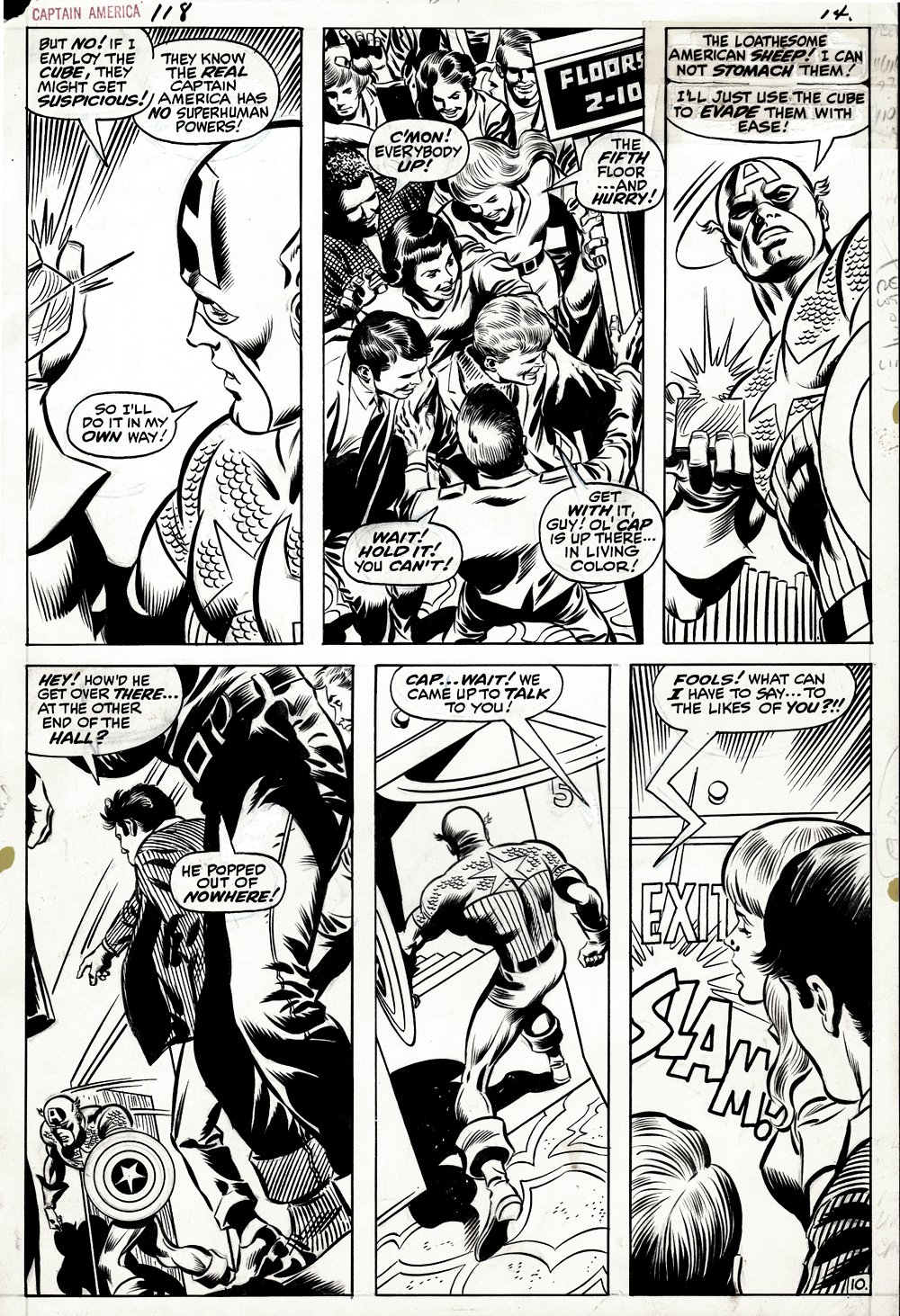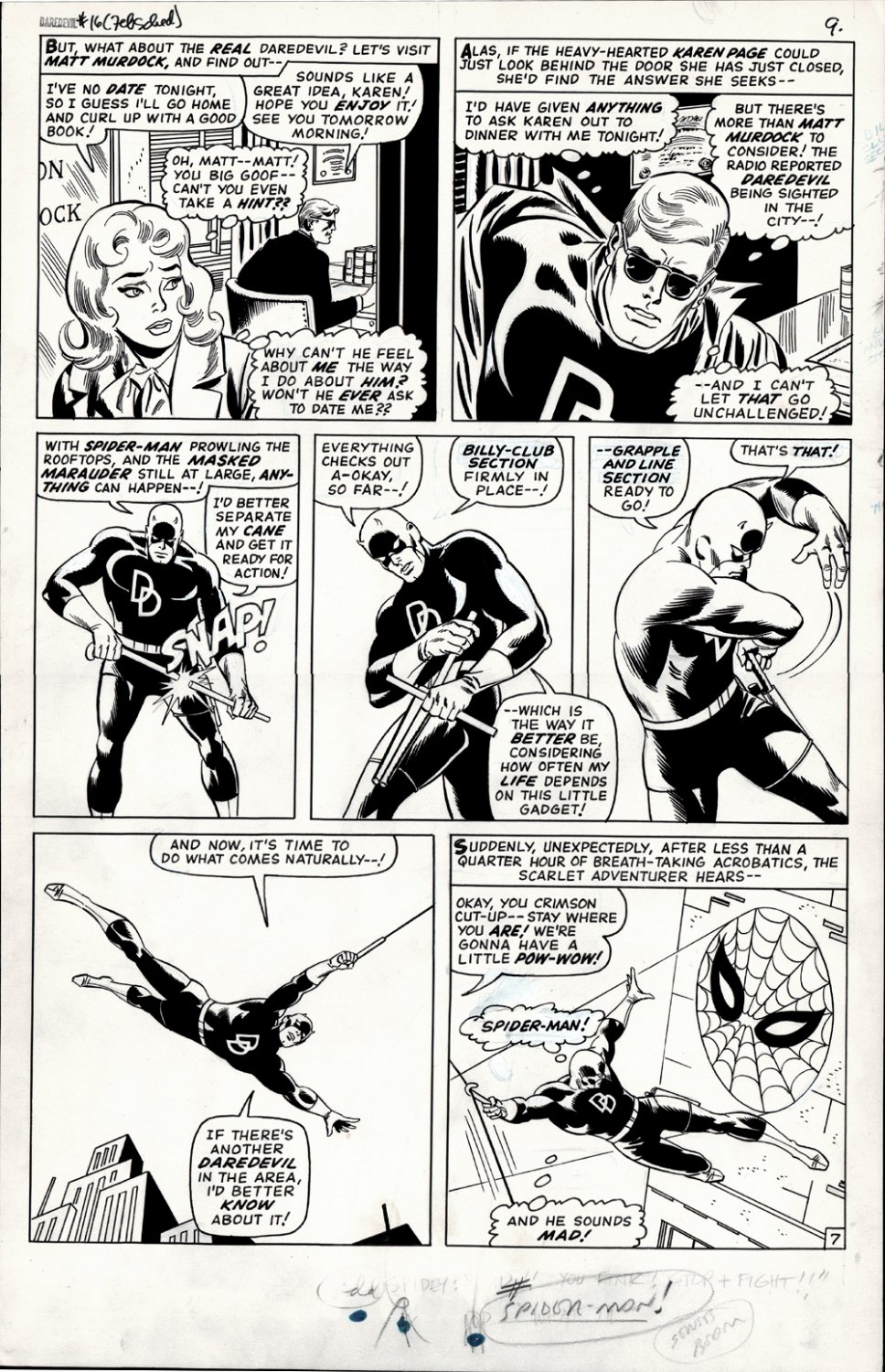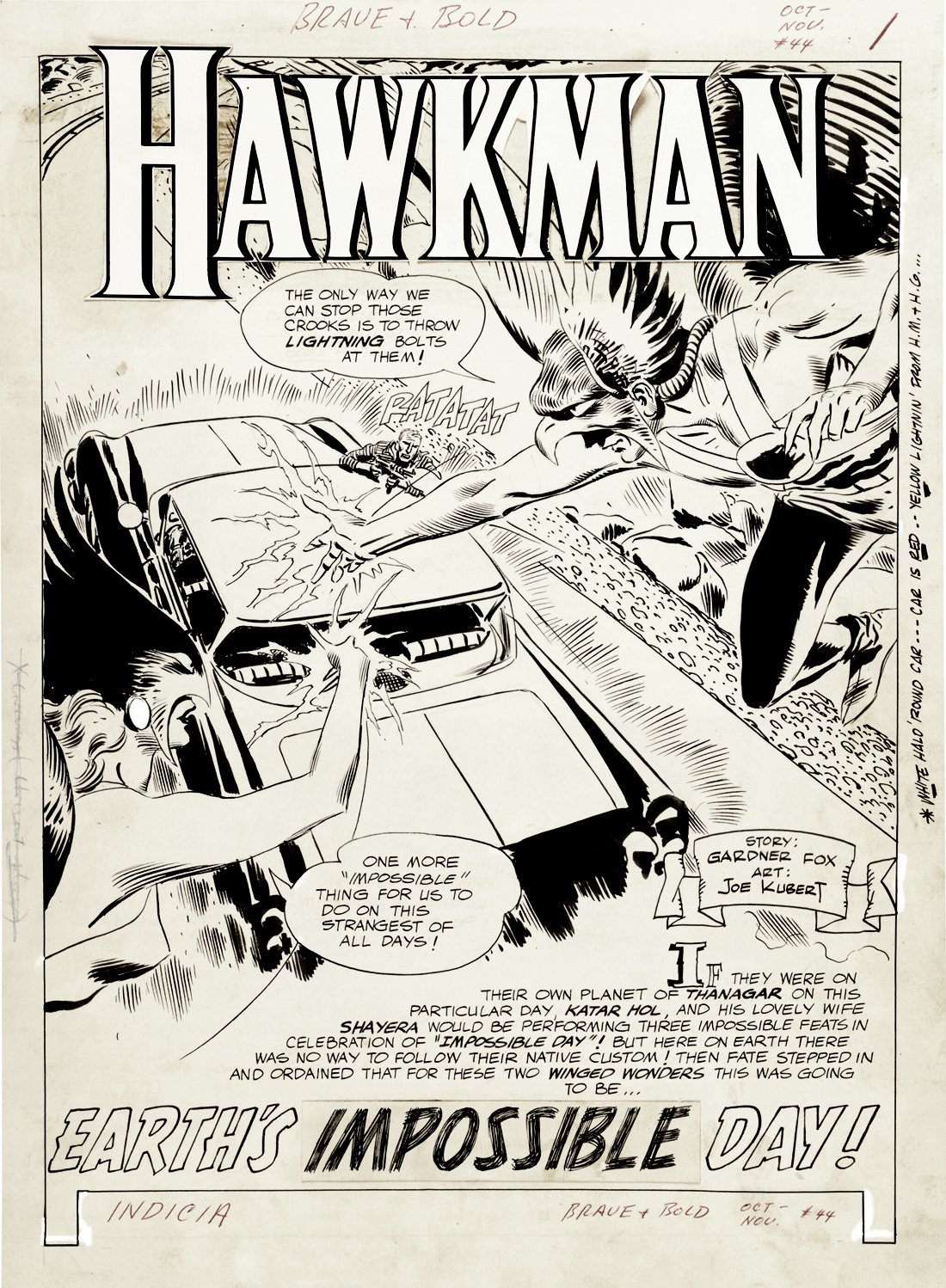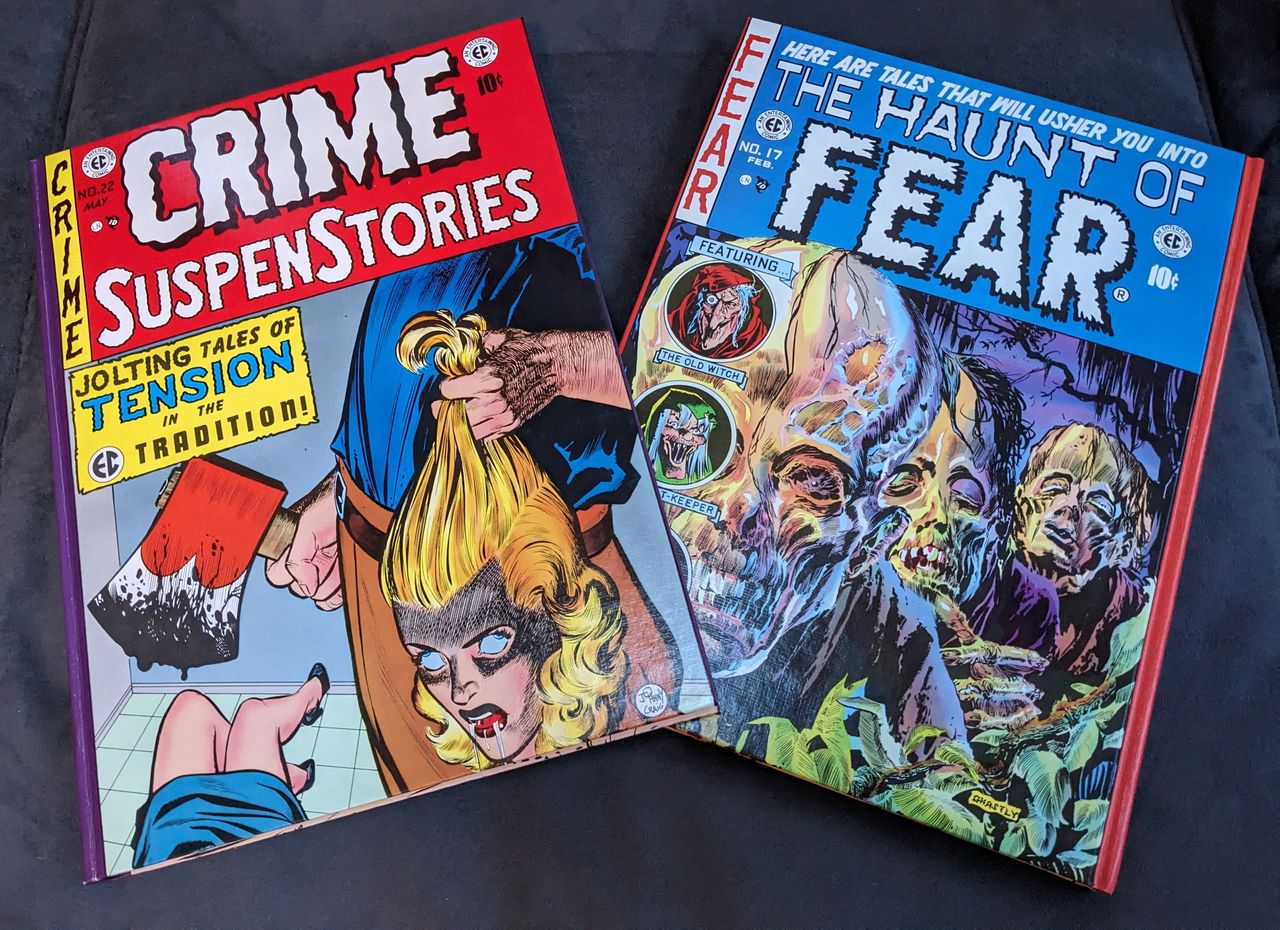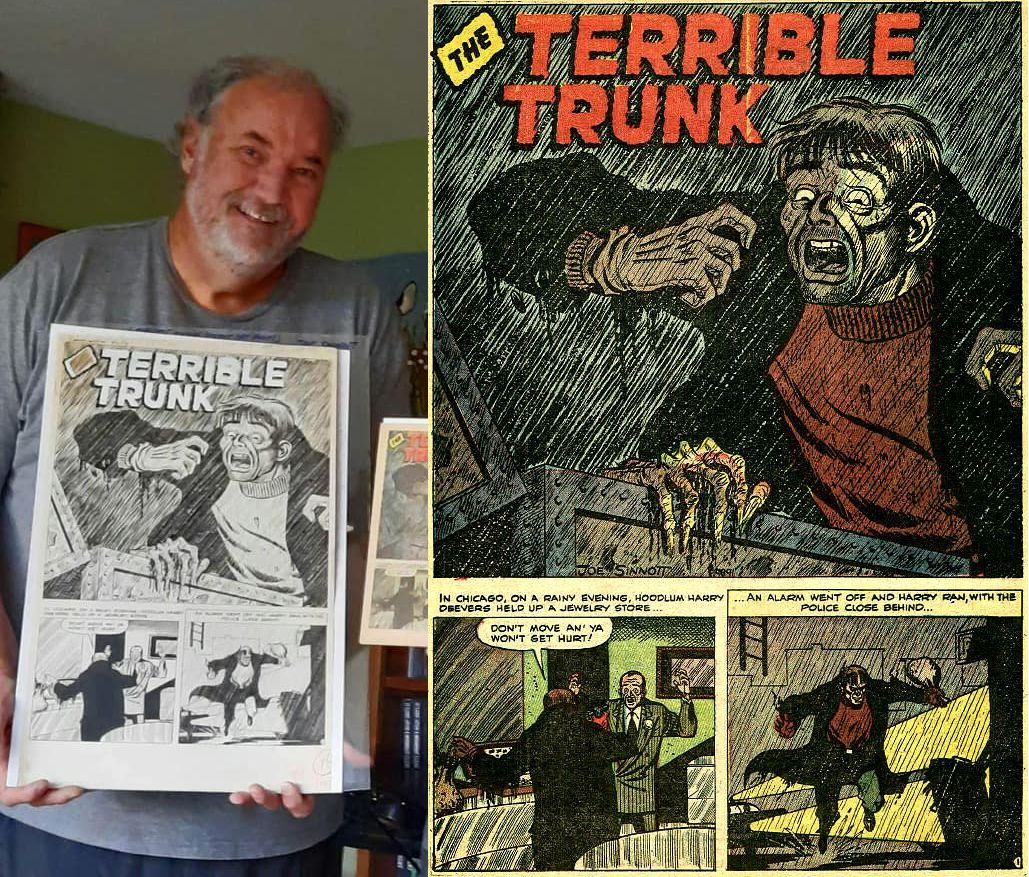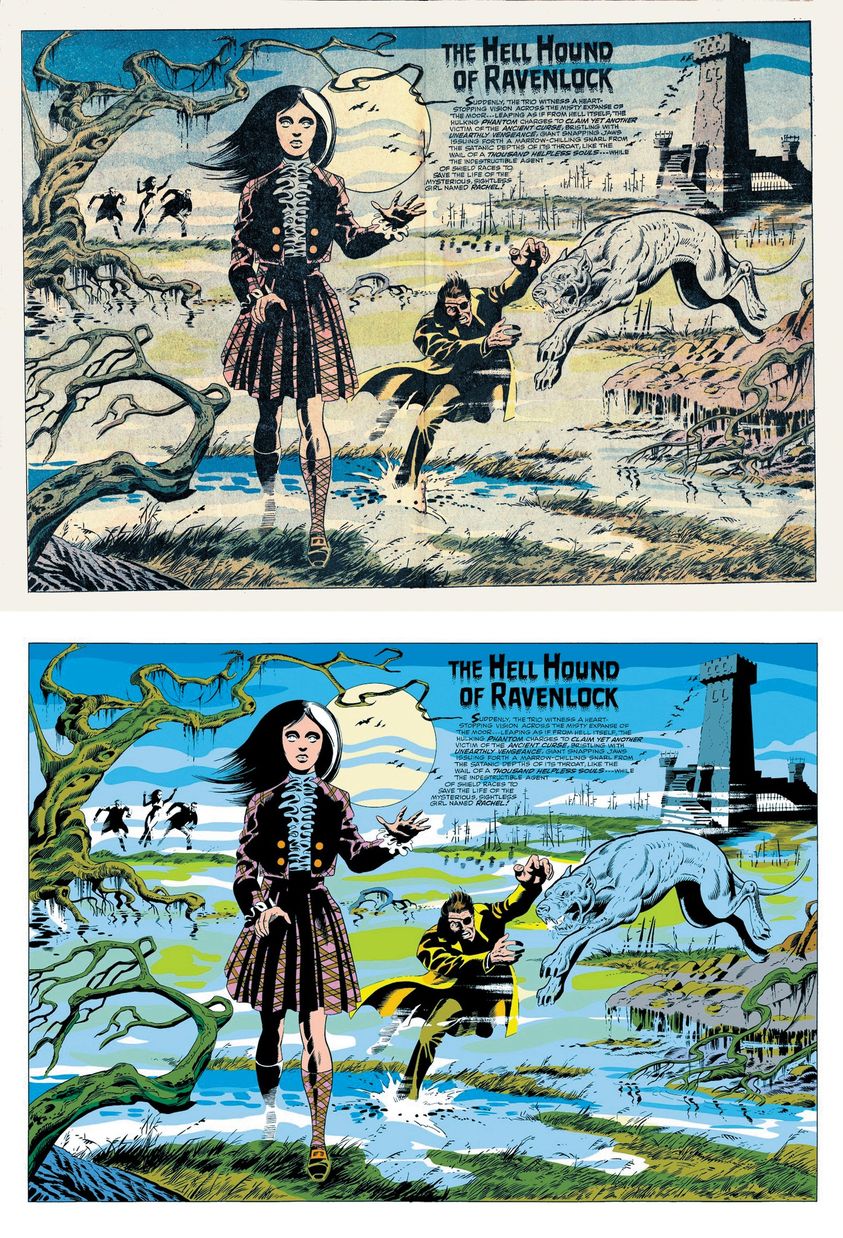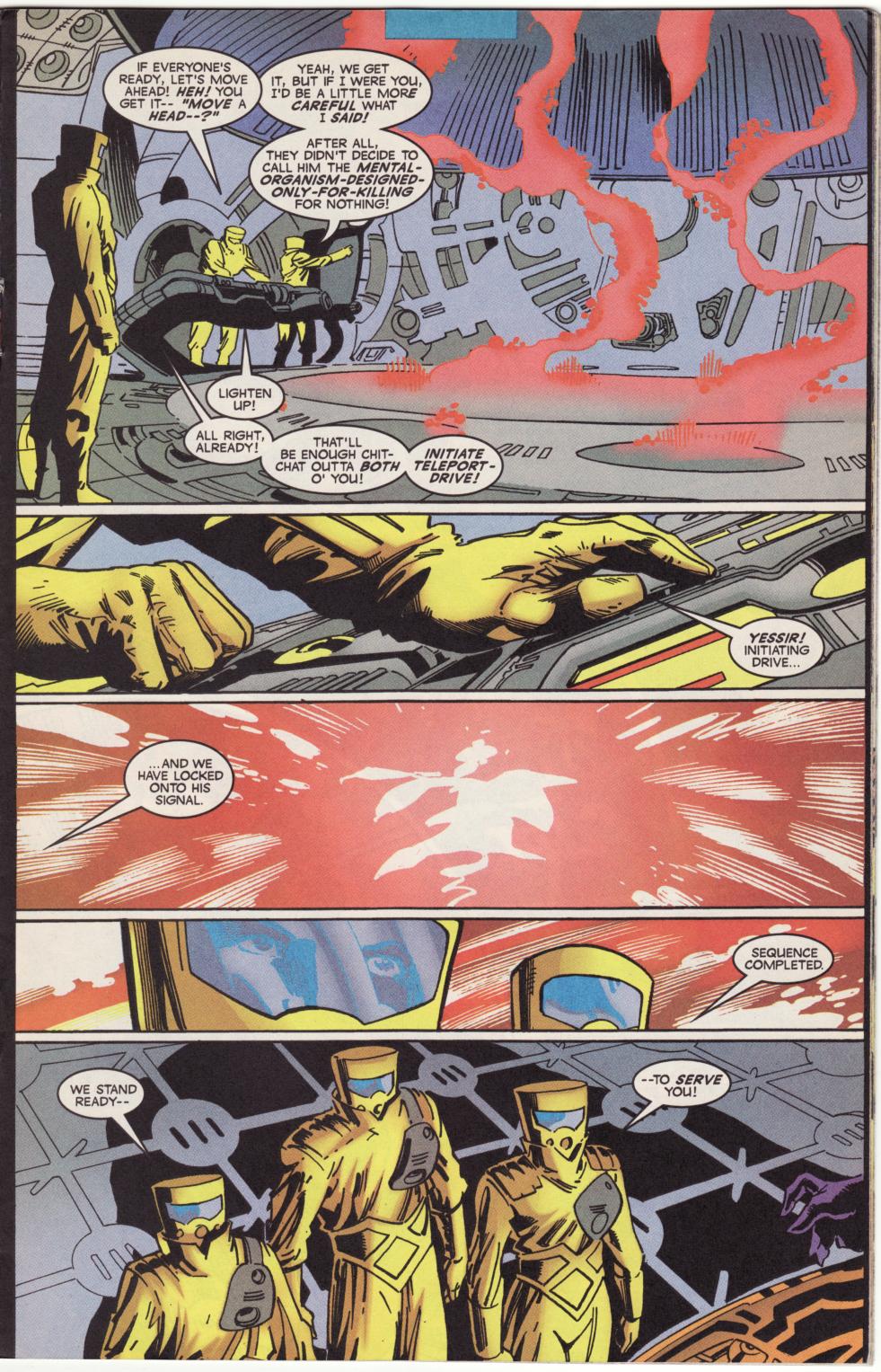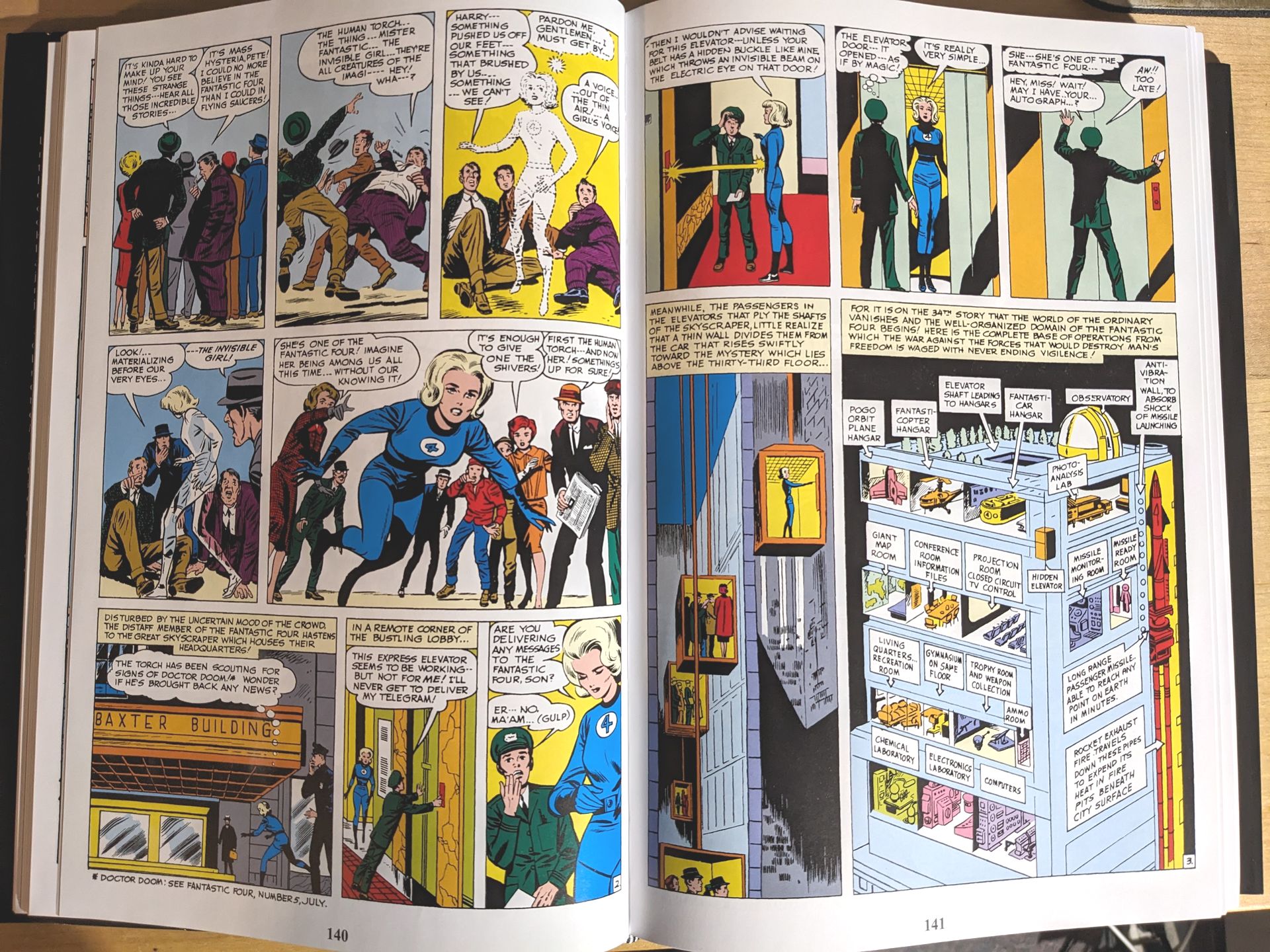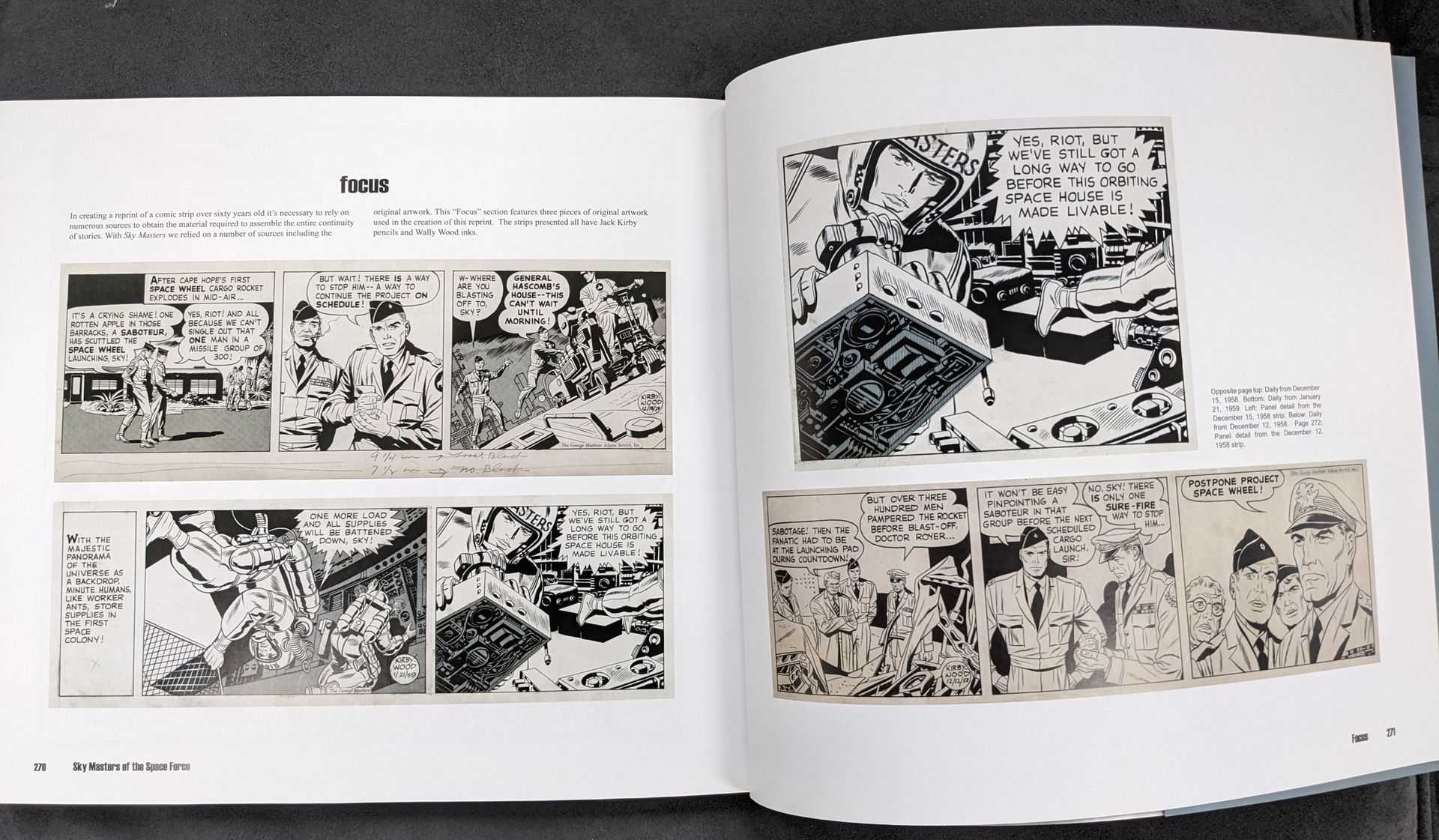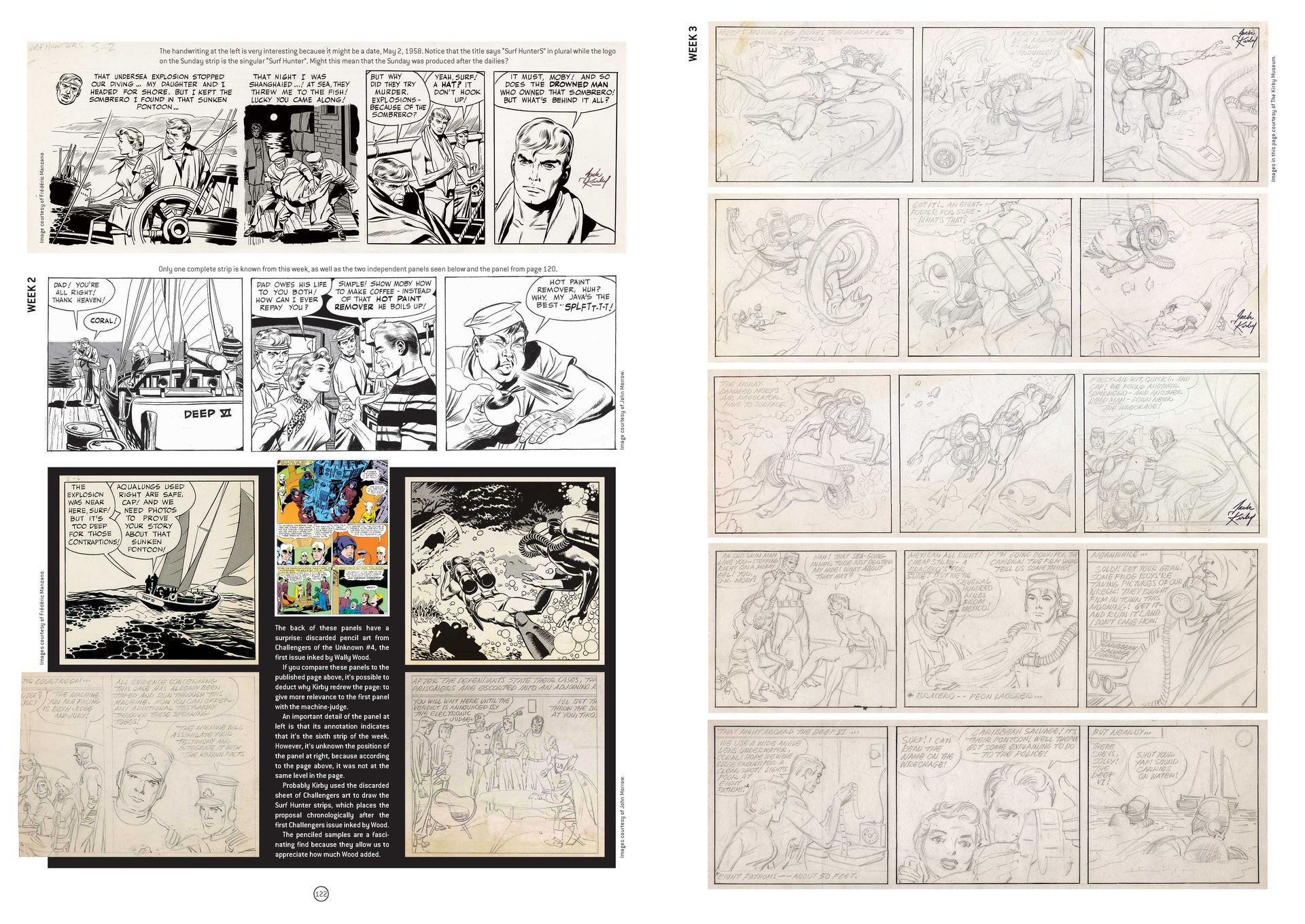I found these scans on art dealer Mike Burkey’s site, Romitaman.com.
Category: Joltin’ Joe Sinnott
The late, great Marvel Comics Legend, Joe Sinnott
Dead Heads
These talking heads are all deceased now, but fortunately they were interviewed before it was too late for them to share their EC memories.
Wait, don’t go away yet! What about the other comic book companies that were publishing horror comics along with EC? This video features my dearly departed pal Joe Sinnott.
The earliest known surviving original art that Joe drew for Stan Lee is from a horror story. It’s page 1 of “The Terrible Trunk”, published in the Atlas pre-code comic book Adventures Into Weird Worlds #5, April 1952.
https://pappysgoldenage.blogspot.com/2007/12/number-233-terrible-trunk-from-atlas.html
Thanks to comic art dealer Mike “Romitaman” Burkey, the page now belongs to Joe’s son Mark.
On the Mend
All’s well post-op for my friend. Dr. Doom will be pleased with the results.
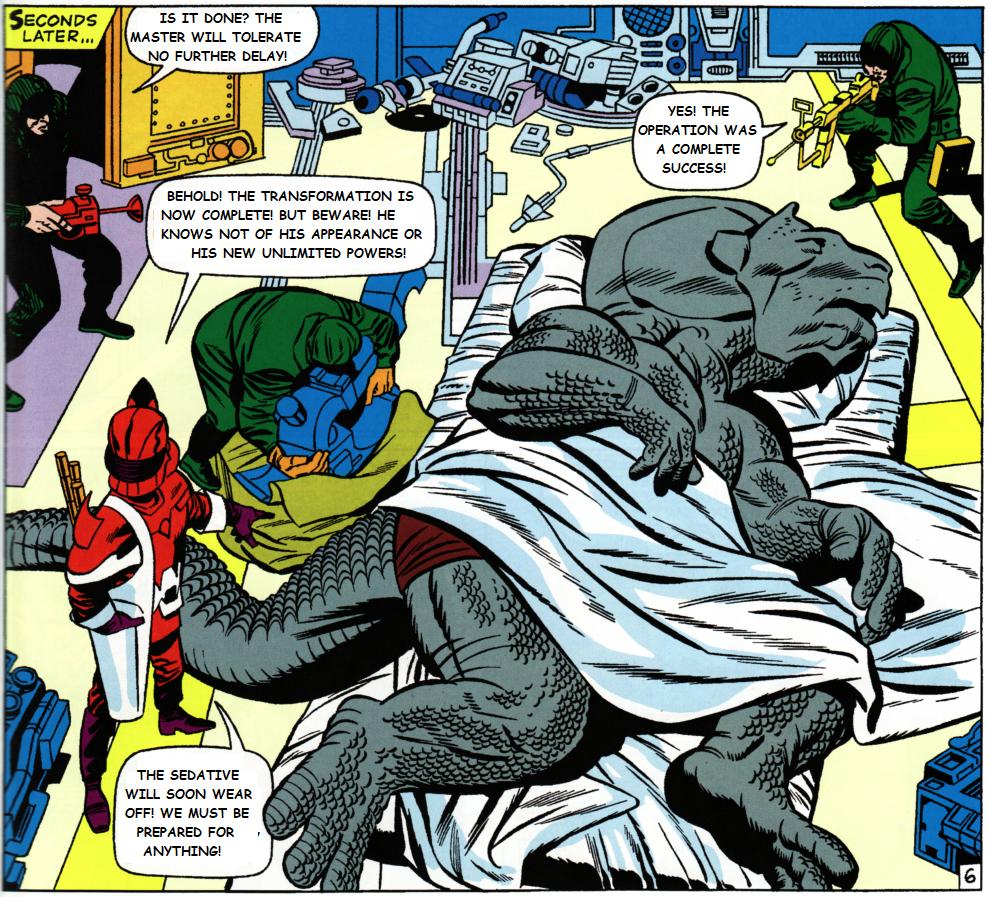
And now I call upon the restorative healing power of BING CROSBY and AURORATONE! It was created with the intention of quieting shell-shocked vets returning from combat in WWII.
All in Color for 12¢ – Part 2
There is a dark side, literally, to digital comic book coloring. Having more colors to work with meant more finely shaded tones. But what looks great on a computer screen can appear muddy on the printed page. This video is about the opposite problem, with colors being too bright.
Chris at Comic Tropes apologizes to José Villarrubia for not crediting him as the source for some of the images he used. Here are a couple of Jim Steranko examples that José posted on Facebook.
For this one I’m adding a Heritage Auctions image of the original art. Looking at it full size, you can see that most of the white lettering is a negative image made on a stat camera and pasted onto the art. In a past life I was proficient at stat camera and paste-up work. Never had a chance to try preparing color separations.
I’m not a fan of glossy paper for comic books. The Marvel Omnibus volumes are guilty of both overly bright colors and glossy paper, along with some poor restoration of linework.
Comic book letterer Todd Klein has this view on the subject of coloring. Todd mentions his use of #3 Winsor-Newton Series 7 brushes, which was also Joe Sinnott’s favorite brush.
https://kleinletters.com/Blog/coloring-comics-old-school/
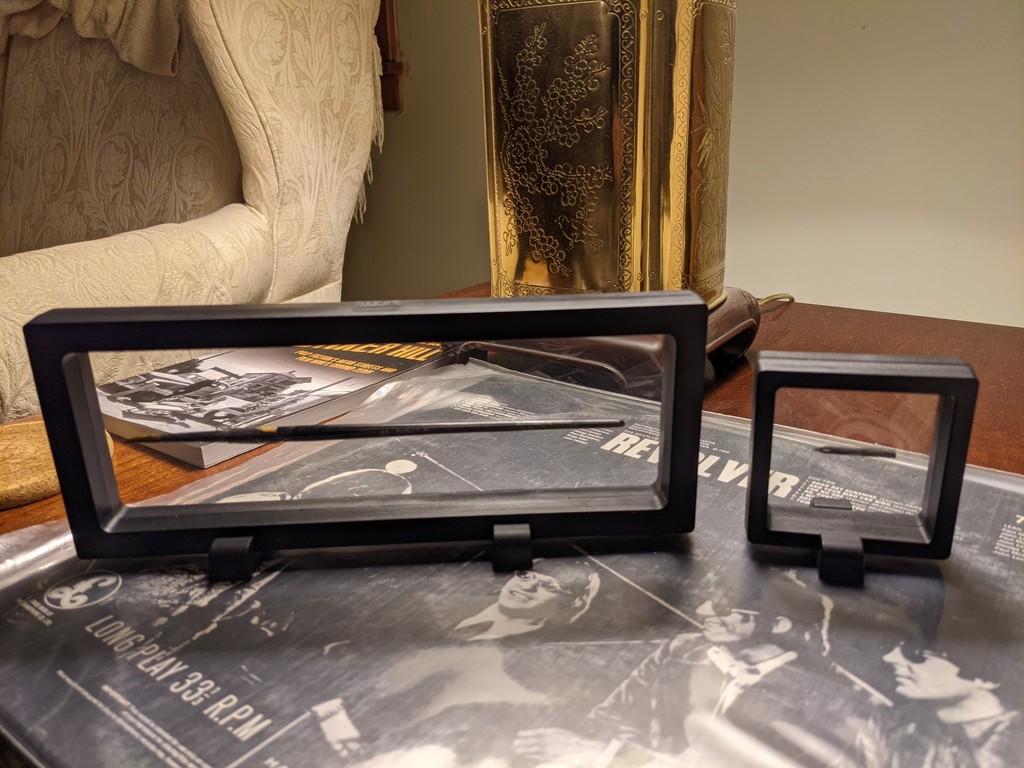
All in Color for 12¢ – Part 1
The title is a nod to All in Color for a Dime, by Dick Lupoff and Don Thompson. Comic books haven’t cost 12¢ since 1969, but I am forever fond of my first few years being a fan.
Bob Wiacek is a former comic book inker who received some of his training from Joe Sinnott. Here is an example of Bob’s work from the millennial year, 2000, on pencils by Joe Bennett.
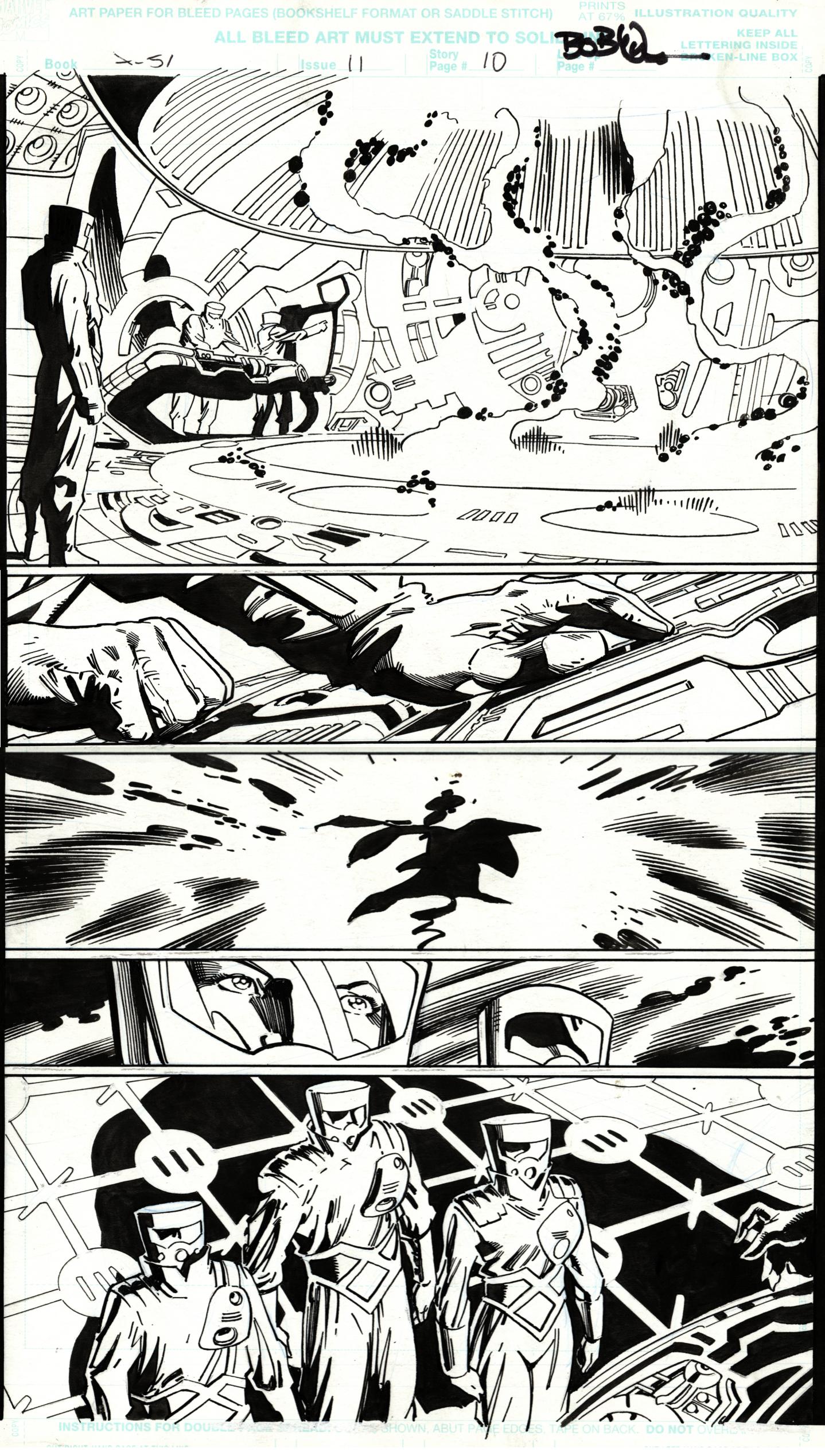
Here is how the page appeared in print, with very effective colors by Mark Bernardo. This is an excellent, and relatively early, example of digital coloring.
With the combination of quality paper and improved printing technology compared to the old days, the images come alive. Where digital colors, good paper, and perfect printing can go wrong will be the subject of Part 2.
Sorry to say, Wiacek is now legally blind from a medical problem. Bennett was reportedly released from Marvel for political reasons.
Spaaaaaaaace Forrrrrrrrrce!
Wally Wood considered himself to be the world’s second best comic book artist, behind Jack Kirby. I would also place him as second best at inking Kirby next to Joe Sinnott, while noting that some other aficionados aren’t wrong in preferring Wally over Joe. (You know who you are!)
Mark Evanier says he has revised his own opinion of Wood inking Kirby.
As Mark says, Joe Sinnott decided he was putting too much of his own style on Kirby’s pencils. Especially the faces, as I heard Joe say more than once.
As was done at DC, Marvel would also put inkers with a lower page rate on their best-paid pencilers. Vince Colletta, who made his money on quantity more than quality, had a long run inking Jack on Thor. Stan, who proudly called The Fantastic Four “The World’s Greatest Comic Magazine,” took Vinnie off the title after his sub-par job on Annual #3, and paid Joe what he was worth to return, starting with issue #44.
Mark says, “They [DC] could have stolen Joe Sinnott away from Marvel but they didn’t want him.” By then, 1970, Joe had a contract with Marvel, and he wouldn’t have wanted to work for DC anyway. Their editors had a reputation for abusing talent, to the point of extorting kickbacks, although Carmine Infantino put an end to that practice, once he was in charge. Which brings up the story of Joe inking FF #5, only to stop working on issue #6 the same day that he began.
Joe’s working method was to ink pages from the bottom up. He’d put off inking the first page, aka the “splash,” until completing the other interior pages, saving the cover for last. Joe’s handiwork is seen only on the bottom 2/3 of page 2 in FF #6, with Dick Ayers taking over after that.
Joe had received a lucrative offer from Treasure Chest, the comic book publisher affiliated with the Catholic Church. It meant stopping his work for Stan, but with another mouth to feed in the house the offer was too good to turn down. (That “mouth” is currently recovering from a burst appendix. Get well soon!)
I can imagine how some DC editors — perhaps any of them — would have reacted to that. “You sonuffa b*tch! Who the !@#$% do you think you are, pulling a stunt like that? You’ll never work here again!” Joe had a taste of that sort of abuse when he told Colletta he could no longer be the ghost penciler for Vinnie’s Romance comics at Charlton.
So what did Stan do when Joe walked out and left him high and dry? Stan told Joe he understood and that he should do what was best for his family. Not only that, Joe was welcome to return to Marvel whenever he was ready, which of course he famously did. That was Stan “The Mensch” Lee.
Anyway, back to the actual subject of this post. A comic strip that resulted in Jack being treated very badly by DC. A few years ago, this book collected the complete run of daily comic strips for Sky Masters of the Space Force.
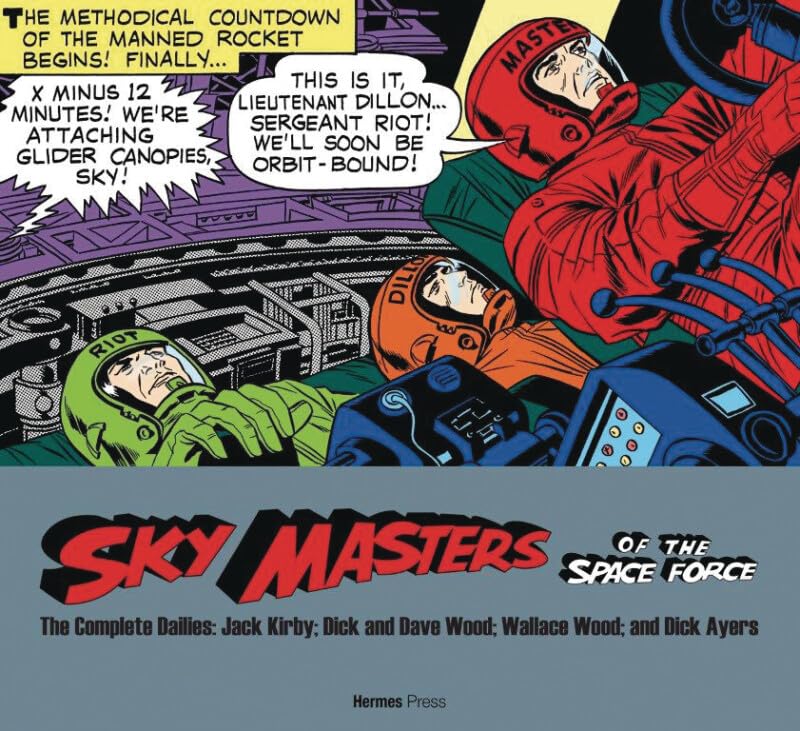
Sky Masters of the Space Force: the Complete Dailies 1958-1961
Distributed by a small syndicate, the feature was short-lived, and it came to a bad end, with Jack having to do the inking himself and him even being sued by DC editor Jack Schiff. But it got off to a fantastic start, with Wally inking Jack. Even if Wood was the world’s second best comic book artist, he was the acknowledged greatest of sci-fi comic book artists, making him the perfect choice to ink Sky Masters.
The Jack Kirby Museum & Research Center is launching its Kirby Museum Press with a follow-up Sky Masters volume, collecting all of the Sunday strips, in color. It’s being crowd-funded on Zoop, a sort of Kickstarter for comic books and related projects.
https://zoop.gg/c/skymastersofthespaceforce
As you might guess, I went for the Everything bundle. These are some of the preview pages.

